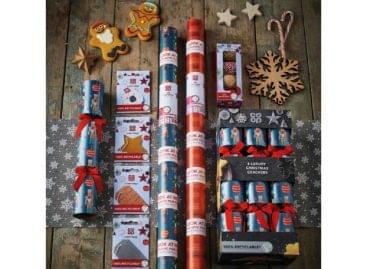NAK recommends giving preference to Hungarian products when buying sausages
The National Chamber of Agriculture and Food (NAK) also recommended giving preference to Hungarian products when choosing New Year’s Eve sausages, because they are traceable, continuously controlled, and designed for the Hungarian taste.
 In a statement sent to MTI, the NAK emphasizes that the composition of sausages is strictly regulated by the Hungarian Food Code.
In a statement sent to MTI, the NAK emphasizes that the composition of sausages is strictly regulated by the Hungarian Food Code.
The most important of the regulations is the meat content, which is at least 51 percent for the finished product. If the meat content is lower or the mechanically separated meat in the product is more than 10 percent, it can no longer be called sausage.
To select a high-quality product, the NAK recommends that consumers look for the HU oval stamp on the back label of pre-packaged sausages, which indicates the domestic plant, and it is also worth checking the meat content of the ingredients.
According to the overview of the National Chamber of Agriculture and Food, consumers can choose from a wide range of products this year as well. The hit products are likely to be the lightly smoked lamb sausage, crispy sausage and Frankfurter sausage, but Vienna sausage is also popular during this period. Consumers continue to look for cheese and chili-flavored products.
Related news
More than 100 Hungarian farmers also demonstrated in Brussels
🎧 Hallgasd a cikket: Lejátszás Szünet Folytatás Leállítás Nyelv: Auto…
Read more >Hungarian champagne crowns the end-of-year holidays!
🎧 Hallgasd a cikket: Lejátszás Szünet Folytatás Leállítás Nyelv: Auto…
Read more >NAK: Domestic producers await customers with an ample supply of all pine species
🎧 Hallgasd a cikket: Lejátszás Szünet Folytatás Leállítás Nyelv: Auto…
Read more >Related news
The Hungarian Food Bank is putting together 44,000 food packages from the proceeds of ALDI’s first Advent market
🎧 Hallgasd a cikket: Lejátszás Szünet Folytatás Leállítás Nyelv: Auto…
Read more >Temu is crushing domestic webshops – Christmas won’t change either
🎧 Hallgasd a cikket: Lejátszás Szünet Folytatás Leállítás Nyelv: Auto…
Read more >How to prepare for the holidays with your four-legged friend
🎧 Hallgasd a cikket: Lejátszás Szünet Folytatás Leállítás Nyelv: Auto…
Read more >






